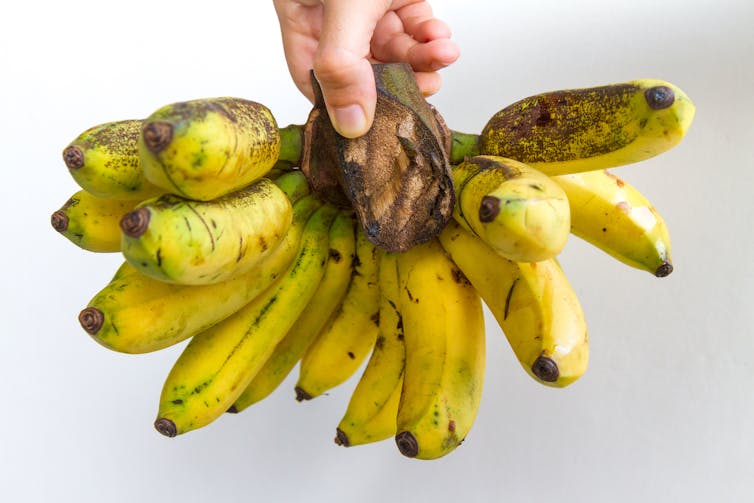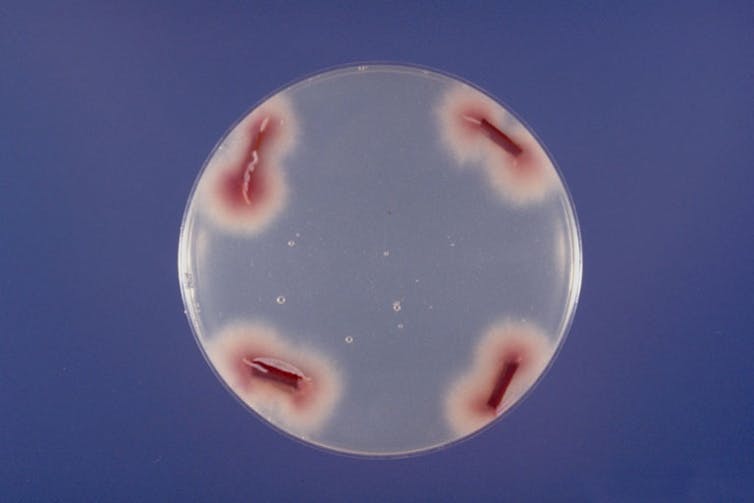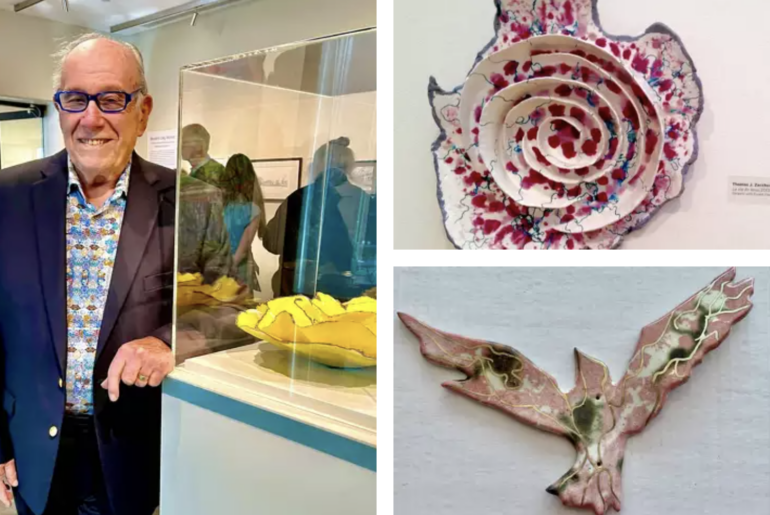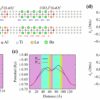Did you know that the bananas you eat today are not the same type as the ones people were eating a few generations ago? The banana you might have had with your breakfast today is a variety called the Cavendish banana, while the one that was in grocery stores up to the 1950s was a variety called Gros Michel, which was wiped out by a disease called Fusarium wilt of banana, or FWB.
FWB of Gros Michel was caused by Fusarium oxysporum race 1, a fungal pathogen that affects bananas. This fungal infection kills a plant by occupying its vascular system, blocking water and mineral transportation.

You would be hard-pressed to find a Gros Michel banana in American supermarkets today.
krares/iStock via Getty Images Plus
Plant biologists developed the Fusarium-resistant Cavendish variety to replace the Gros Michel. Yet, over the past few decades, a resurgence of FWB caused by a different strain of the same fungus called tropical race 4, or TR4, is once again threatening global banana production.
How did Fusarium oxysporum gain the ability to overcome resistance and infect so many different plants?
The two-part genome of F. oxysporum
I am a genomicist who has spent the past decade studying the genetic evolution of Fusarium oxysporum. As a species complex, F. oxysporum can cause wilt and root rot diseases in over 120 plant species. Certain strains can also infect people.
In 2010, my lab discovered that each F. oxysporum genome can be divided into two parts: a core genome shared among all strains that codes for essential housekeeping functions, and an accessory genome varying from strain to strain that codes for specialized functions like the ability to infect a specific plant host.
Each species of plant has a sophisticated immune response to defend against microbial invasion. So to establish an infection, each F. oxysporum strain uses its accessory genome to suppress a plant’s unique defense system. This functional compartmentalization allows F. oxysporum to greatly increase its host range.

The genomic structure of Fusarium oxysporum allows it to have a wide range of hosts, such as tomatoes, cucumbers and watermelon.
Edward L. Barnard, Florida Department of Agriculture and Consumer Services, Bugwood.org, CC BY-SA
In our newly published research, my team and colleagues in China and South Africa found that the TR4 strain that kills Cavendish bananas has a different evolutionary origin and different sequences in its accessory genome compared with the strain that killed Gros Michel bananas.
Looking at the interface of where the TR4 strain is battling with its Cavendish banana host, we found that some of its activated accessory genes release nitric oxide, a gas harmful to the Cavendish banana. This sudden burst of toxic gases facilitates infection by disarming the plant’s defense system. At the same time, the fungus protects itself by increasing production of…



